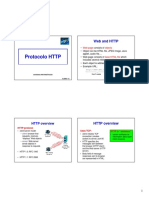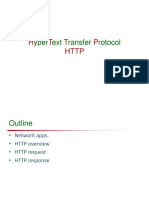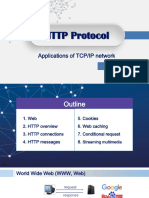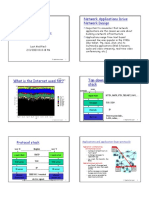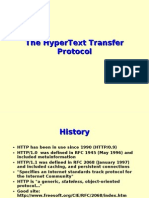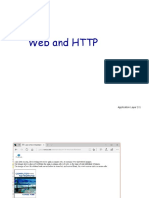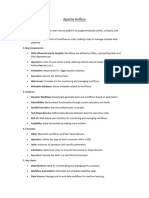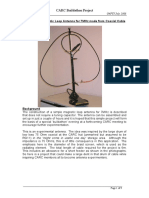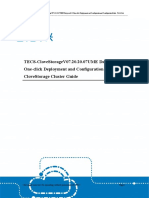0% found this document useful (0 votes)
76 views21 pagesHTTP
The document provides an overview of the HTTP protocol. It describes how HTTP uses TCP to transfer objects between clients and servers. It outlines the basic operation of HTTP including URLs, requests, responses, headers, status codes, and methods. Persistent connections and cookies are also discussed. The document concludes by briefly introducing HTTPS which provides encryption over HTTP using TLS.
Uploaded by
Saras PantulwarCopyright
© © All Rights Reserved
We take content rights seriously. If you suspect this is your content, claim it here.
Available Formats
Download as PDF, TXT or read online on Scribd
0% found this document useful (0 votes)
76 views21 pagesHTTP
The document provides an overview of the HTTP protocol. It describes how HTTP uses TCP to transfer objects between clients and servers. It outlines the basic operation of HTTP including URLs, requests, responses, headers, status codes, and methods. Persistent connections and cookies are also discussed. The document concludes by briefly introducing HTTPS which provides encryption over HTTP using TLS.
Uploaded by
Saras PantulwarCopyright
© © All Rights Reserved
We take content rights seriously. If you suspect this is your content, claim it here.
Available Formats
Download as PDF, TXT or read online on Scribd
/ 21













